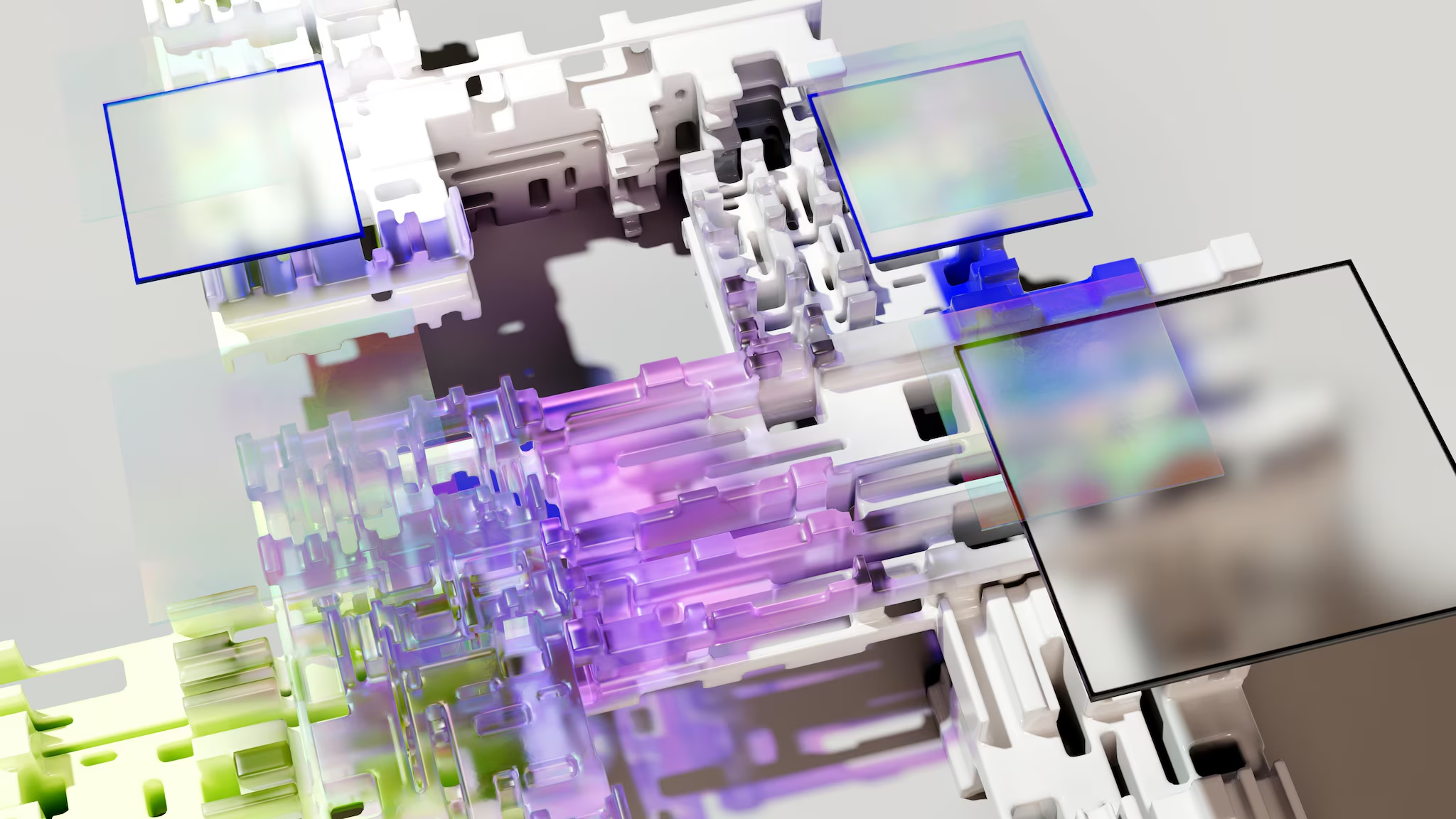How Smart Robots Work: AI Perception, Planning & Execution Explained
Key Takeaways
- Smart robots leverage advanced AI for perception, planning, and execution, enabling them to autonomously perform complex physical tasks in dynamic real-world environments.
- These intelligent machines are rapidly transforming enterprise operations across supply chain, manufacturing, healthcare, and agriculture by boosting efficiency and productivity.
- Successful adoption of smart robots requires addressing critical considerations like workforce upskilling, robust cybersecurity (including IoT and IT/OT security), and ethical implications of autonomous decision-making.
Imagine a future where machines not only perform physical tasks but also learn, adapt, and make intelligent decisions in dynamic environments. This future is rapidly becoming a reality with the advent of smart robots, poised to revolutionize industries from manufacturing to healthcare.
In this article, we'll delve into smart robots: what makes these intelligent machines 'smart', how they perform tasks, and how they are reshaping the operational landscape.
What are smart robots?
An emerging technology trend in 2025, Gartner defines Smart Robot as an AI-driven mobile machine that can perform physical tasks. From the Gartner glossary:
Typically, intelligent machines can take an input from the user, account for some context or historical data, and execute tasks without human intervention. (In contrast to human in the loop intelligence, where an AI system still needs a human for certain tasks, perhaps inputs or review.)
A subset of intelligent machines, smart robots hold one key differentiation: since the robotic machines perform physical tasks, they must also account for the surrounding physical environment. This requires smart robots to model the surrounding environment and account for the physical constraints that appear dynamically within the reach of a robot’s physical movement.
To understand the physical constraints and how they change in real time, smart robots have core components including sensors, actuators, and AI including machine learning, computer vision, and natural language processing (NLP).
Smart robots are a quintessential example of Cyber-Physical Systems (CPS), integrating computational capabilities with the physical world.
How smart robots work: Perception, planning, execution
Smart robots use AI across a combination of task perception, planning, and execution. These activities are tightly integrated and allow the robot to navigate through a physical environment, where the surrounding physical constraints and user input can change dynamically.
Perception
Like humans, robots need to see and perceive their physical surroundings before they can act. Robots don’t see things exactly as we do, but they can certainly interpret the environment and acquire quantifiable measurements such as:
- Distance to an obstacle
- Shape and slope of the turn
- Temperature
- Other relevant metrics
The idea of “perception” in a smart robot comes from our own human survival in a physical world: we have to know if it’s possible to perform a physical action given the perceived state of the surrounding environment. The answer comes down to three AI-based tasks in the domain of machine perception: object detection, localization, and environmental awareness.
Object Detection
Sensors such as LiDAR, infrared, and RGB cameras capture raw visual information from the surroundings. This data is cleaned, preprocessed, and prepared for AI model training. Now, the models can learn various image processing tasks, such as:
- Segmentation of objects within the image
- Depth perception: how far the object is to the robot
- Classifications: shapes, sizes or physical attributes of the physical objects)
- And more
Localization
The task of localization involves calculating the robot’s physical orientation, current position, the state of the environment it is now, and where it will reach by following the next sequence of actions.
Algorithms such as SLAM (Simultaneous Localization and Mapping) develop a map of an unknown surrounding environment while simultaneously tracking the robot’s location within it.
Environmental awareness
Sensor fusion and signal filtering techniques allow the machines to extract the most relevant information from raw visual data, regarding the real-time and dynamic changes of the surrounding physical environment.
With these three tasks, the Smart Robot can understand its environment, because it has “perceived” it.
Planning and Execution
Once the Smart Robot understands its environment, it needs to decide how to perform a physical action. This requires intelligent decision-making capabilities, since any action can change its state within the environment and any new environment state leads to new physical constraints in the environment.
The following AI enabled actions are involved during this stage: path planning, predictive modeling, and control and learning.
Path planning
Determine the most efficient and safe path from current place to a destination, considering the obstacles and other physical limitations that may apply. While path planning is real-time, it is not necessarily end-to-end between the starting place to the ending destination. This is because the smart robots, like humans, can only see what’s around them and surroundings change as they move.
Predictive modeling
While it is true that environment changes are dynamical, these changes can often be anticipated in advance. The process of predictive modeling involves the analysis of historical and present data in order to predict what comes next, in this order:
- Uses trends and patterns within the dataset
- Learns how the Smart Robot and its environment behave within a current state, given all of its past states and actions.
- Decides what the next state for the Smart Robot will look like.
Control and learning
Once the robot has the capability to comprehend its surroundings and its own actions, it relies on its interactions with the environment for two important tasks:
- Creating a model of the environment (or otherwise determining an environment state without explicitly modeling it).
- Developing a control policy that defines how to act within any particular state.
Interactions with the environment produce a response such as a change in environment state or getting stuck due to an obstacle.
With sufficient exploration of the environment, the robot can exploit this knowledge (of the environment and its own behavior) to safely perform physical tasks. This concept is called Reinforcement Learning and is one of the most common approaches to Smart Robot movement controls and execution. Reinforcement Learning is also a critical technique employed in some of the most promising intelligent machines we see today, such as:
- Fine-tuning large language models (e.g., RLHF for alignment).
- Developing advanced control policies in self-driving cars.
Smart robot use cases for the enterprise
So how can you use Smart Robots in the enterprise? The key idea is that any physical task where a machine (sensors) can extract sufficient knowledge from the environment and mechanically execute required actions in context of physical constraints on its own, is a suitable use case application for Smart Robots.
These intelligent machines are rapidly transforming various industries by enhancing efficiency, safety, and productivity.
Supply chain and logistics
Perhaps one of the most impactful areas, smart robots are poised to revolutionize the entire supply chain. Gartner predicts a significant shift: by 2030, one in 20 supply chain managers will be managing robots rather than humans. This highlights a future where robots handle a vast array of physical tasks, freeing human managers to focus on strategic oversight and optimization. Specific applications include:
- Automated warehousing: Robots can perform tasks like automated picking and packing, inventory management, and transporting goods within large distribution centers, significantly increasing throughput and accuracy.
- Last-mile delivery: Autonomous vehicles and drones equipped with smart robotics can streamline the final leg of delivery, especially in urban environments or remote areas.
- Fleet management: Smart robots can assist in loading, unloading, and even basic maintenance checks for logistics fleets, ensuring smoother operations.
Manufacturing
Smart robots are already a cornerstone of modern manufacturing, but their capabilities are rapidly expanding. They excel in:
- Precision assembly: Performing intricate and repetitive assembly tasks with high accuracy and consistency, reducing human error and improving product quality.
- Quality control: Utilizing advanced vision systems and AI to inspect products for defects at high speeds, ensuring adherence to quality standards.
- Material handling: Moving heavy or hazardous materials, operating in dangerous environments, and ensuring a continuous flow of components on the production line.
In industrial settings, smart robots are often integrated into Industrial Control Systems (ICS) and function as key Industrial IoT (IIoT) devices, making their robust security and seamless integration paramount. Going further, smart robots can integrate with or even act as autonomous components within SCADA systems, providing real-time data acquisition and control for critical industrial processes.
Healthcare
The healthcare sector is increasingly adopting smart robots to support patient care and operational efficiency.
- Surgical assistance: Robots can assist surgeons with precision and steadiness, particularly in minimally invasive procedures.
- Logistics and delivery: Transporting medications, lab samples, and supplies within hospitals, reducing the workload on staff.
- Disinfection and cleaning: Autonomous robots can perform thorough disinfection in clinical environments, enhancing hygiene and safety.
Agriculture
Smart robots are bringing precision and automation to farming, addressing labor shortages and improving yields.
- Precision planting and harvesting: Robots can accurately plant seeds and harvest crops, optimizing resource use and minimizing waste.
- Crop monitoring: Using sensors and AI, robots can monitor crop health, detect diseases, and apply targeted treatments.
- Automated spraying: Robots can apply pesticides or fertilizers precisely where needed, reducing chemical usage and environmental impact.
The integration of smart robots across these sectors underscores a broader trend: a shift from humans performing purely physical tasks to humans overseeing and collaborating with intelligent machines. This evolution promises not only increased operational efficiency but also new opportunities for innovation and growth, largely driven by the enhanced Operational Intelligence they provide through real-time physical data
Smart robots: Impact and future outlook
However, this transformative shift also brings important considerations. Companies adopting smart robots must address challenges such as the need for upskilling the workforce to manage and maintain these advanced systems, ensuring robust cybersecurity for connected devices.
As connected physical devices and advanced endpoints within a network, smart robots fall under critical IoT monitoring and security concerns, requiring continuous oversight to prevent vulnerabilities. This integration blurs the traditional lines between IT and OT security, introducing unique challenges that demand specialized approaches to protect both data and physical operations.
As we now expect with AI systems, navigating ethical implications surrounding autonomous decision-making is crucial. Despite these issues, it's clear that smart robots are becoming intelligent partners that will increasingly shape how we operate and live.
From automation to smart robotics
Smart robots represent a pivotal leap in automation, moving beyond mere programmed actions to intelligent, adaptive, and autonomous physical systems. Their ability to perceive dynamic environments, plan complex actions, and learn through AI techniques like SLAM and Reinforcement Learning makes them invaluable assets for the enterprise.
From optimizing supply chains and revolutionizing manufacturing to assisting in healthcare and agriculture, smart robots are proving their worth across diverse sectors. Understanding how these versatile machines work and their business impact will be vital for companies in an increasingly automated world.
Related Articles

How to Use LLMs for Log File Analysis: Examples, Workflows, and Best Practices

Beyond Deepfakes: Why Digital Provenance is Critical Now

The Best IT/Tech Conferences & Events of 2026

The Best Artificial Intelligence Conferences & Events of 2026

The Best Blockchain & Crypto Conferences in 2026

Log Analytics: How To Turn Log Data into Actionable Insights

The Best Security Conferences & Events 2026

Top Ransomware Attack Types in 2026 and How to Defend
